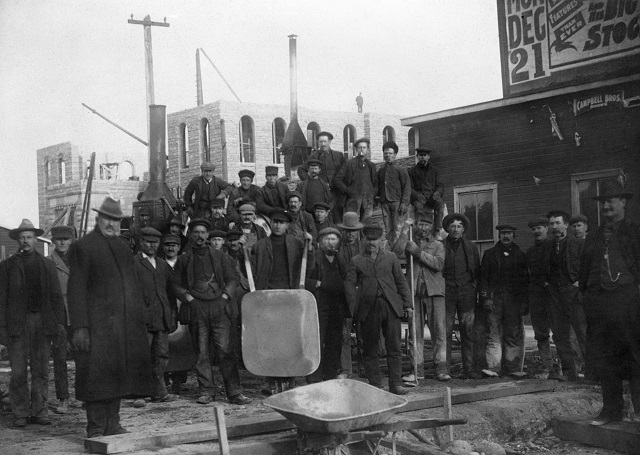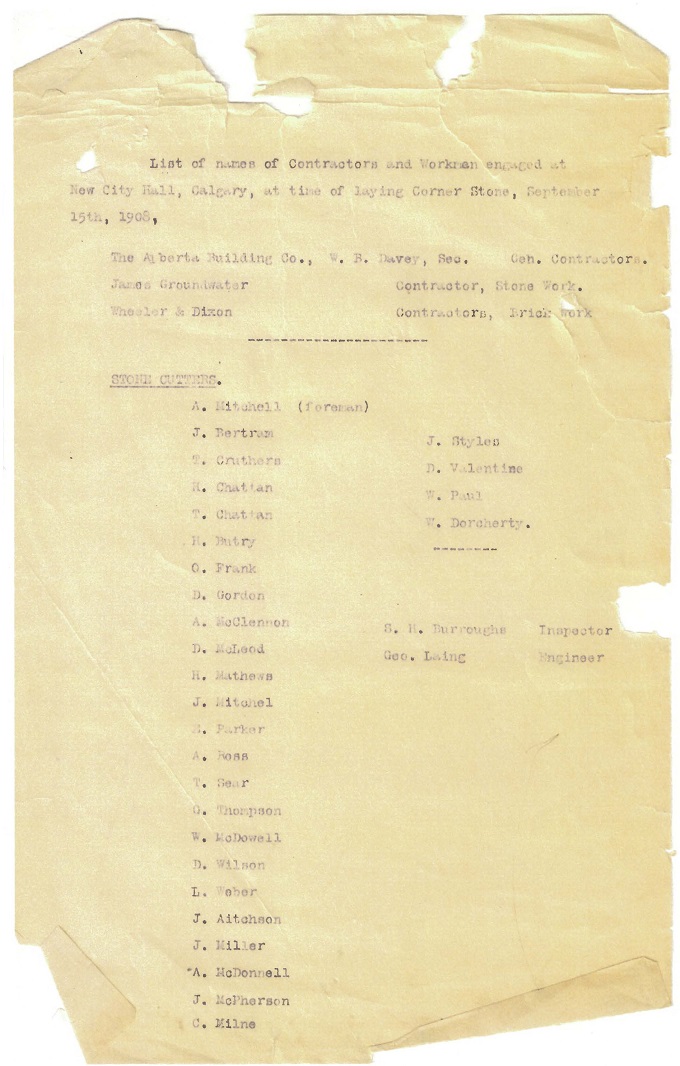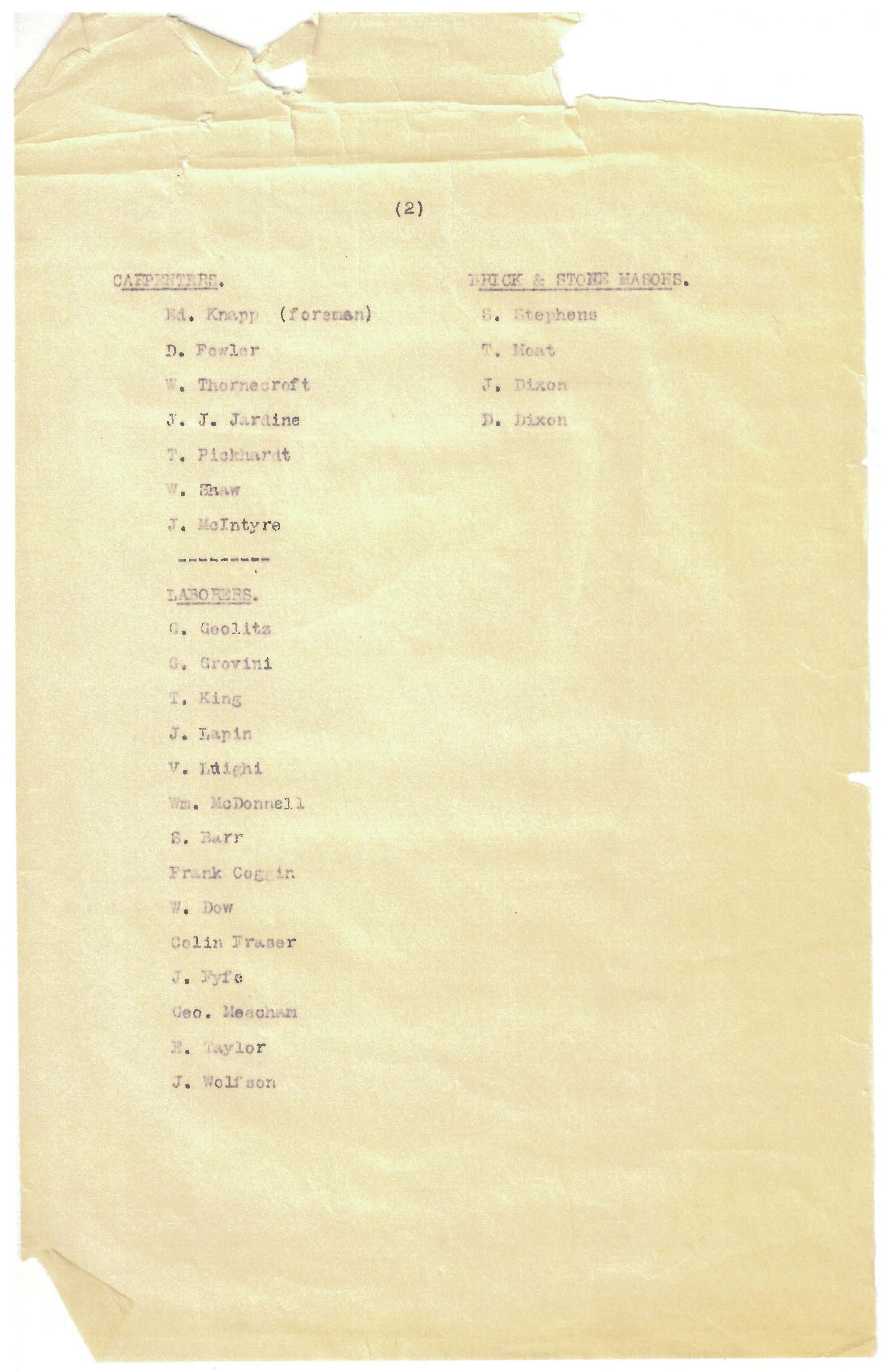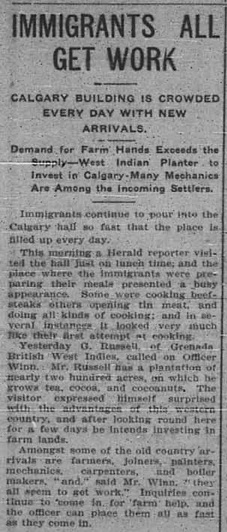Where did they find craftsmen?
After 1886, Calgary became known as the “Sandstone City” for its widespread use of sandstone in public, commercial, and residential buildings. In addition to a major construction boom between 1906 and 1913, the prevalent use of sandstone in Calgary helped attract skilled craftsmen to the city. The building trades flourished during this time, with building permits peaking at over $20 million in 1912. Work was available to all who wanted it—though little permanent work was available for unskilled labourers, many of whom drifted in and out of the city. With only a modest industrial base in Calgary, however, a large unskilled labour force did not emerge and most workers in the city were skilled artisans.
List of names of contractors and workmen engaged at New City Hall at time of laying corner stone, September 15th, 1908. Courtesy City of Calgary Corporate Records, Archives
Between 1907 and 1911, Calgary’s City Hall was one of the largest construction projects in the city. Payroll records survive for the first construction phase between the fall of 1907 and the spring of 1909, offering a glimpse of who was involved in the building’s construction. Most of the skilled craftsmen who helped build City Hall were subcontracted by stonemasons Thomas Muir and James Groundwater, who in turn subcontracted the brickwork to Arthur Whillier and James Dickson. About thirty carpenters worked intermittently on the building, with lulls in work during the winter season. The stone workers were an even larger group, and more steadily employed. They included eleven masons, thirty-three stonecutters, eleven mason labourers, and some 165 other men who worked as bricklayers, labourers or in other unspecified roles.
Grant MacEwan (1902–2000), a city historian and Calgary’s mayor from 1963 to 1965, wrote that in 1889, "men calling themselves stone masons were so numerous" in Calgary that they "might have elected a mayor and council of their own choosing." According to some estimates, at the peak of the sandstone era about half of the tradesmen in Calgary consisted of stonemasons, who one historian has characterized as "free spirits who worked each stone with loving care and let their imaginations run free." Based on the names on the payroll, the majority of the men appear to have been Scottish or English. This reflects the broader population of Calgary at the time, of whom 70 to 80 percent were of British descent, as well as the city’s general labour force, of whom the majority were new arrivals from the British Isles or Europe. For large construction projects in other cities occurring around the same time, such as Government House in Edmonton and the Canadian Museum of Nature in Ottawa, up to 300 stonemasons were specially recruited from Scotland. However, this does not appear to have been the case in Calgary, where the city’s sandstone quarries and buildings provided a steady stream of masonry work for nearly three decades, and a more permanent skilled labour force.

The construction crew of Historic City Hall, circa 1908-1909. Courtesy Glenbow Archives




